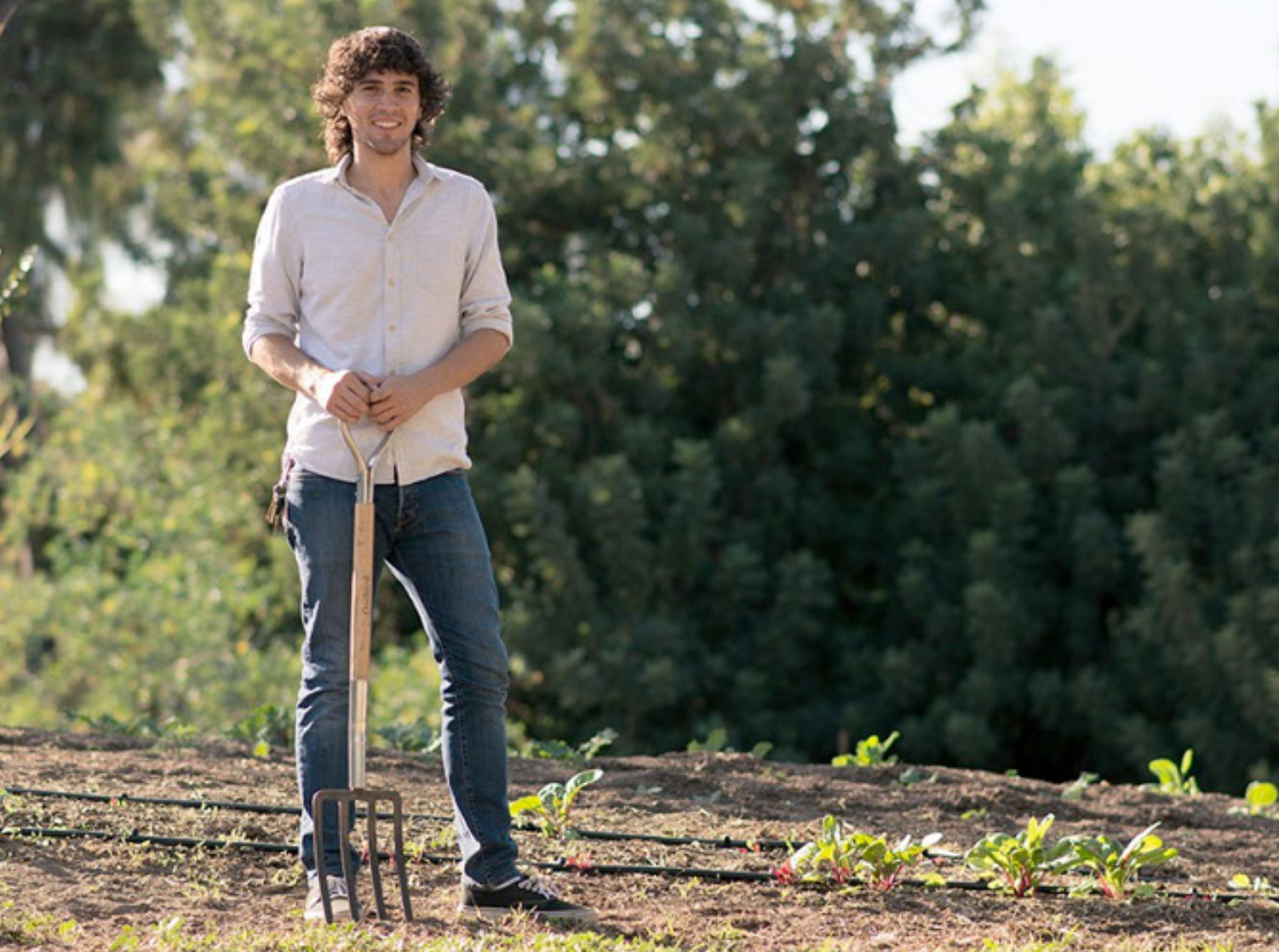Seeds of Change
Combining the benefits of school gardens and technology in the classroom

“I always liked the idea of growing my own food…eating something I grew instead of going to the store,” Andrew Shensky (Environmental Studies Graduate Student) says, as he reflects on his earliest memories of gardening, adding “I guess I always had this kind of romanticized idea of being a farmer.”
When he speaks, Shensky's passion about the circumstances surrounding food become immediately clear - he is concerned with growing it, how it affects the environment, sustainability, waste products, and a whole host of other factors in and surrounding agriculture. But, it wasn’t until he came to CSUF, initially as an undergraduate double majoring in Geography and Anthropology, and he joined the NIFA-funded U-ACRE program (The Urban Agriculture Community-based Research Experience) that he fully realized that he could become more involved in agriculture, and he didn’t have to wait.
"There’s been a ton of research on the benefits of school gardens…lots of scholarly articles written about it"
Now, an Environmental Studies Graduate Student, Shensky has fully embraced his passions for agriculture and academia. His current focus is on identifying open spaces in Orange County, particularly those at schools that are within food insecure communities, and advocating for the creation of school/community gardens.
“There’s been a ton of research on the benefits of school gardens…lots of scholarly articles written about it” Shensky states before going on to list some of the academic and lifestyle benefits of school gardens “improved test scores, improved behavior, an increased willingness to taste unfamiliar vegetables” to name a few. Shensky, also being aware of the benefits of technology in the classroom, wondered “If you have these two things that have these benefits, what would happen if you brought them together?”
And so, that’s the exact question that he set out to answer, and the focus of the presentation he gave this past October (2015) at the 3rd annual “Yale Food Systems Symposium” in New Haven, Connecticut.
Over the course of about a year Shensky created a web app for use at Ladera Vista Junior High School, which was first implemented into garden lessons during November of 2014. The app serves as a learning tool and to increase engagement in and with the school’s garden by enabling students to understand sustainability issues such as limiting waste through proper garden management, creating accurate inventories of supplies, and improving use of garden resources to reduce costs. Additionally, the app provides details about each type of plant in the garden, which includes basic information, proper care, and even recipes that feature the crop.
Shensky is extremely enthusiastic when it comes to his beliefs in the potential benefit that the marriage of a school garden and technology could lead to. “I think using the app in the school’s garden can, at the very least, bring the garden to the center of food systems education on campus… the garden can be used as a spring board for all sorts of lessons.”
And so far the results of the app’s implementation look promising. Shensky recently conducted a ‘Garden App Assessment’, which included both basic and advanced level questions about the garden. The test was administered to three distinct student groups.
- Students with no exposure to the garden or the app.
- Students with exposure to the garden but not the app.
- Students with exposure to the garden and the app
While groups 1 and 2 performed similarly, group 3 scored significantly higher in both basic and advanced level questioning, suggesting that students exposed to the app have an improved understanding of what is taught during garden lessons. Another benefit of the app, as Shensky explains, is that “Survey results suggest that using the app in the garden may help to promote greater interest in the garden as well as promoting discussion between students and parents”.
“U-ACRE has allowed me to accomplish many things I never thought I would be able to accomplish”
Looking forward, Shensky hopes that he can continue to refine and expand upon the app’s capabilities and usefulness. At present, students can use the app to collect all sorts of data pertaining to things like water usage, soil conditions, growth, temperatures, and planting methods. This information is stored and becomes immediately available to teachers. As the information becomes more robust it can be used in their lesson plans. “This means lessons can be based off student collected data, as opposed to arbitrary numbers from a textbook” Shensky explains. The hope is that this will give students a more applicable understanding of, and connection to, their assignments. Furthermore, he believes it could serve to increase their interest in subjects like math and science, and even history depending on how creatively teachers can become in utilizing the information.
“U-ACRE has allowed me to accomplish many things I never thought I would be able to accomplish” Shensky declares as he reflects on what the program has meant to him; and the list of accomplishments is quite lengthy. He’s been able to develop and present his own research at regional, state, and national level conferences; he’s been awarded at the California Geographical Society Conference twice (once for his app, and again for his research as a whole.) Accolades aside though, what Shensky truly cherishes most are the personal bonds that he has been able to establish with community partners and with other U-ACRE fellows. “I currently get to work on important meaningful issues with a great group of fellow students and I couldn't ask for anything more than that.”
If you’d like to learn more about the U-ACRE program, visit their website to see how you can get involved.
College of Humanities and Social Sciences

Sara E. Johnson, Ph.D.
Project Director and Principal Investigator
Email - sjohnson@fullerton.edu
Phone - 657 278 5762
All additional photos in Spark page are decorative images.
